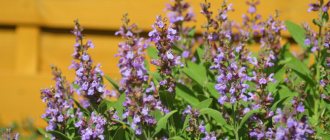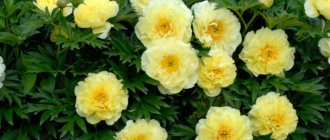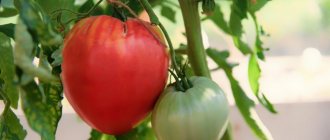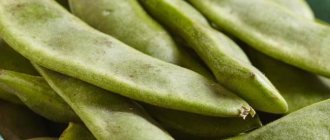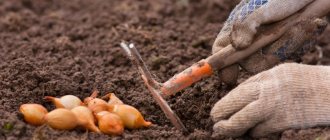Features of growing ampelous lobelia
Lobelia ampelous is grown in open ground. The plant is unpretentious, compact. Most often the height is 20 cm, but there are varieties whose shoots grow up to 1.5 m.
Ampelous lobelia can be grown in open beds, but the flower also grows well in the openwork shade of trees. It is best if the sun hits the plantings before lunch, and in the second half of the day they will be in the shade.
Abundant flowering is observed on light, loose and nutritious soils.
Important! A high content of humus leads to an increase in green mass, but there will be few flowers.
Ampelous lobelia refuses to bloom after the first wave if the shoots are not shortened in a timely manner. The plant also requires abundant watering.
There is one more feature of growing lobelia - when sowing, you do not need to sprinkle the seeds thickly, otherwise the seedlings will be weak and flimsy. It will quickly stretch out, and this is detrimental for lobelia.
Varietal diversity
Brought from North America, the showy perennial Lobelia is a member of the bellflower family. But for horticultural purposes, due to its inability to withstand frost, it is most often cultivated as an annual plant.
In floriculture, there are 3 types of lobelia:
- upright, relatively loose bushes up to 30 cm high;
- compact, growing in dense “balls” up to 20 cm high;
- ampelous forms with half-meter cascading lashes.
The most popular are ampel-shaped lobelias, which are ideal for growing in garden flowerpots and hanging flowerpots. To decorate outdoor terraces, varieties of lobelia are available for sale, characterized by durable stems that can withstand strong gusts of wind.
Compact bushes of the plant are formed from several angular-branched stems, reaching a length of 40-50 cm. In ampelous forms, they effectively hang down, giving the bush the appearance of a dense sphere. The leaves are dotted with small elongated leaves and the same miniature two-lipped flowers.
The color palette includes many shades, starting with white, blue and blue, ending with purple and violet. The only exceptions are fiery shades. Ampelous lobelia with yellow, red and orange flowers does not exist in nature. In addition to its decorative qualities, lobelia is also famous for its healing properties. It contains many useful substances and components that can suppress viral infections and cope with inflammatory processes in the body. In folk medicine, it is used to remove waste and toxins from the body, treat nicotine addiction and relieve attacks of bronchial asthma. But since the plant is an alkaloid, that is, poisonous, it should be used for pharmacological purposes with great caution.
Planting ampelous lobelia
Lobelia seeds can be sown as seedlings indoors, and in the southern regions - directly into the ground.
Important! Plants planted as seedlings bloom in early June and continue to delight with lush buds until September. And those sown in the ground bloom only in August.
Growing ampelous lobelia from seeds
First you need to consider how to grow seedlings indoors.
For sowing, use small containers or peat tablets. You can make the soil yourself or use ready-made seedling compounds that are sold in flower shops.
Stages of work:
- The soil and containers are treated with boiling water, to which several crystals of potassium permanganate are added. This procedure rids the soil of pests and disease spores, in particular blackleg.
- Fill the containers with soil and press it down a little.
- The seeds of ampelous lobelia are laid out on slightly moistened soil. Under no circumstances should they be covered with soil!
- Of course, such small seed is difficult to spread, but this is not necessary. After all, when picking and planting in a permanent place, seedlings are planted in groups of several seedlings.
- Water with a syringe so as not to bury the seeds. The top is covered with a film, which is removed after the first shoots appear.
Attention! Shoots do not appear soon, sometimes only after a month.
At first, growth is very slow, it seems that the seedlings are standing in one place. After a month, the seedlings will form a root system. It is still weak, but is already capable of feeding the sprouts. Real leaves appear on them. When the seedling height is 3-4 cm, you can start picking.
Plants are carefully selected from the nursery in groups of several shoots and transplanted into pots or cups.
It is useful for novice gardeners to see how picking lobelia is done:
A week later, when the plant takes root, carry out the first fertilizing with fertilizers for indoor flowers. After another 7 days, the growing point is pinched so that already at the seedling stage the plant begins to branch.
Water the seedlings only with water at room temperature. The soil should not be too moistened to prevent blackleg from appearing. If there is not enough light, you need to take care of the lighting.
Important! To water seedlings and flowers in open ground, you cannot use tap water, as it contains chlorine, which is harmful to plants.
As already mentioned, seeds can be sown directly into the soil:
- prepare the soil, spill it with hot water and potassium permanganate;
- distribute the seed in the nursery, cover with glass on top;
- when the height of the plants reaches 4 cm, the seedlings are thinned out, being careful not to damage the roots;
- Seedlings are transplanted in groups at a distance of 15-20 cm.
Attention! According to the description of the culture, lobelia can be replanted several times for better development of the root system.
Planting seedlings
When picking, the seedlings were transplanted into pots in small groups. Plants have time to grow 2-3 months before planting in a permanent place. Therefore, they will have to be divided again to avoid dense plantings that negatively affect flowering.
Under no circumstances should lobelia seedlings be planted directly outside. Plants unaccustomed to the bright sun will immediately wither. Hardening is carried out gradually. First, the plants are placed in the shade for a few minutes, then the time is increased and the flowers are accustomed to the sun.
Lobelia seedlings are planted after positive temperatures have established and the threat of a return of spring frosts has disappeared. It is difficult to give exact planting dates, since in each climate zone the air and soil warm up differently.
Flower seedlings are planted in open ground from mid-May to mid-June. If lobelia is grown in a greenhouse or greenhouse, then planting is carried out 2 weeks earlier.
How to care for seedlings
Growing seedlings from seeds is quite difficult. It is necessary to constantly monitor the growth process:
| Care | Recommendations |
| Shelter | Clean to eliminate fumes from the walls. Keep the seedlings open for 15 minutes twice a day. After the first shoots appear, remove the cover. Do this gradually, increasing the ventilation time every day by several hours. This will strengthen the immunity of young bushes. |
| Watering | Regular and plentiful, because Lobelia has a poorly developed root system. The substrate should not be allowed to dry out. Water the soil through a spray bottle or tray. You need to make sure that there is no stagnation of water. This will cause root rot. |
| Ventilation | When it is warmer than +10 °C outside, take it out onto the balcony, loggia or terrace. Gradually increase the “walking” time; after a week, leave it outdoors for the entire evening and night. Shade young bushes; direct rays of the sun can cause burns and the plants will die. |
| Top dressing | One-time use, 30-40 days after sowing. It is better to use mineral fertilizers purchased in the store. They must be diluted with water in the concentration indicated on the package. After this, spray the bush with the solution. |
| Dive | It is only necessary if the seeds are distributed randomly throughout the container. Transplantation can be done when the seedlings grow 2-3 true leaves. Diving is done in groups of 4-8 bushes. The lobelia root system has the ability to quickly recover. Therefore, to transplant sprouts, you can cut the soil into squares with a blade. Move pieces of soil into larger containers. |
| Trimming | To avoid strong growth of bushes in length, it is necessary to prune shoots that have reached 5-6 cm. If the goal is to obtain long and hanging shoots, there is no need to pinch. After flowering ends, wilted flower stalks must be cut off. This promotes repeated and lush formation of buds. The second time pruning is done in August. If you plan to collect seeds, there is no need to do this (the seed must have time to ripen before the first frost). |
Caring for ampelous lobelia
Lobelia is an unpretentious plant. They plant it in flowerpots and on beds. For landscape designers, this is just a godsend. You can create a wide variety of flower arrangements. Below in the photo is an ampelous lobelia, the care of which corresponds to agricultural technology.
Caring for ampelous lobelia comes down to traditional measures:
- watering and loosening;
- weed removal;
- feeding;
- pruning for lush flowering.
Watering and fertilizing
Lobelia should be watered generously twice a day if there is no rain for a long time. Experienced gardeners use rainwater or from a standpipe, but pre-settle it. You need to water carefully so as not to expose the roots. Loosen the soil to a shallow depth.
Attention! After watering, the soil should not turn into a “swamp”, otherwise there is a danger of blackleg appearing.
Lobelia is fed every 30 days with complex flower fertilizers.
With proper planting and care, ampelous lobelia blooms magnificently and for a long time.
Trimming and pinching
The main properties of lobelia are bushiness and abundant flowering. This can be achieved by trimming and pinching the tops of the shoots.
The flowers are pruned for the first time after the first flowering. If the operation is not carried out, then the beauty of the bush dries up. All shoots on the plant, even those with flowers, must be cut with a sharp knife almost to the root, leaving stumps no higher than 5 cm.
There is no need to spare the whip. The stronger the pruning, the faster new shoots with flowers will appear. Flowering will be even better than during the first wave. Next time, cut the lobelia partially, removing only weakened and damaged ones.
It is also necessary to do pinching from time to time. The tops of strongly grown shoots are removed so that side shoots appear faster. The third pruning is carried out in early August. Again, only the stumps are left on the plants and the lobelia ampelous is fed with potassium sulfate.
These procedures will allow you to get a lushly blooming ball almost before the first autumn frosts.
If you need to collect your own seeds, then some of the bushes are not cut or pinched. Cut off the shoots with ripened bolls and put them in a glass. After a while, the seeds will fall out on their own; they need to be winnowed away. The seed should be stored in a paper bag in the apartment.
Does lobelia grown from seeds need picking?
It is known that the more fragile the plants, the more difficult it is to pick them. Experienced gardeners try to minimize this traumatic procedure and, if possible, avoid it. How can you protect your hard-grown lobelia from picking?
Ampelous lobelia is grown from seeds in a flowerpot or flowerpot, where it will remain all summer. Tender seedlings only need to be thinned out as needed.
Bush lobelia can be grown from seeds in separate cups or on peat tablets, sowing several seeds in each. Seedlings that have sprouted in cups can be easily transplanted into open ground. You need to thoroughly shed the soil under the seedlings and, slightly deforming the walls, carefully remove the bush. In this case, neither the root system nor the delicate leaves of the ground part will be damaged.
When plants are planted in one large tray, picking is necessary. It is carried out at the stage of two leaves on a stem, approximately 3-4 weeks after sowing. Most often, they practice picking small bushes of 5-7 sprouts. If lobelia is planted one plant at a time, then a second picking is carried out when the fourth leaves appear on the sprouts. Grown seedlings should be removed from well-watered soil, carefully prying the sprout with a toothpick. After picking, the plants need to be watered and hidden from the sun for several days until they take root in the new place. After planting, the seedlings quickly begin to grow. To make it bush better, you can pinch the tops.
Diseases and pests
The flower practically does not get sick, except for the black leg. If the disease appears, you need to quickly solve the problem. To do this, remove damaged plants, otherwise you can lose all the lobelias. They stop watering the soil, and then sprinkle it with sand, which has previously been steamed and watered with a pink solution of potassium permanganate.
If the leaves on the lobelia have darkened, this is due to the development of fungal diseases: powdery mildew or fusarium. First, spots appear on the leaf blades and quickly grow. Eventually the leaves fall off. Before starting treatment, you first need to trim off the damaged leaves and then treat the plantings. Colloidal sulfur or other fungicides can be used.
If the leaves become sticky, then ampelous lobelia is affected by scale insects or mealybugs. The treatment is carried out with laundry soap.
All other problems are related to care errors:
- Curling of leaves. Insufficient watering, long drought.
- Red or purple leaves. The reason lies in the sharp difference between day and night temperatures. If possible, cover the plants on cold nights.
Popular varieties
There are not so many different varieties of ampelous lobelia, but they still exist:
- Blue fountain. The shrub of this variety is compact; it produces up to 6-8 flowing flowering branches. The length of the stem reaches approximately 30 cm. The flowers are painted blue, and there is a white spot in the middle of the inflorescence.
- Regatta. Another fairly common variety. This crop produces a beautiful lush shrub; the inflorescences can be painted in different colors; you can even find flowers in lilac or pink shades.
- Ricciardi. This is a hybrid variation of ampelous lobelia, propagated not by seeds, but by cuttings.
- Red cascade. This variety has a fairly well-developed bush with strong branches. The length of the stem can reach up to 35 cm. The plant is characterized by lush and abundant flowering. Despite the fact that the name of this flower contains the word “red,” in fact, lobelia does not have this color. In this case, the inflorescences are not red at all, but rather crimson or dark pink.
- Lobelia Sapphire. This crop is characterized by lush bushes. The shoots are drooping and reach 35 cm in length. Sapphire lobelia flowers are quite small, colored blue, and if you look closely, you can see white inclusions on the petals.
Description of the ampel culture and its photo
At home, some gardeners grow lobelia as an hanging plant. The fact is that its flexible shoots have the ability to hang from hanging flowerpots. For this reason, the flower is considered an ideal decoration for balconies and loggias. Creeping thin branches branch well and quickly form a dense herbaceous bush. The description of the culture can begin with the fact that the cap of green leaves reaches a height of 10-20 cm. There are decorative varieties of lobelia, in particular the “Erius” type, up to 50-60 cm in height. The leaves of the plant are alternately located on intertwining shoots. They have a solid edge and a lanceolate shape. The crown of leaves is very thick and dense, capable of forming an openwork cap of dark green color.
Ampelous lobelia blooms already at a late stage of seedling development, after planting it with seeds. If the plant has propagated by self-sowing, it will bloom a little later, usually 3-4 weeks, than those that were grown at home. Flowering is abundant, at this time two-lipped buds are formed, up to 2-3 cm in diameter. Delicate flowers can be of various shades.
The most commonly found plants have blue, blue, purple, white and violet flowers. Less commonly, they may be red or pink. There are a lot of small flowers on one shrub; they are attached with short pedicels. The main characteristic of lobelia is that the buds are composed of corolla petals arranged in a fan. The annual blooms in the garden or at home from early June to September. If you properly care for the plant, you can make it bloom again. Typically, repeat flowering is more abundant and colorful.
Look at the photo of ampelous lobelia - the most amazingly beautiful representatives of this culture are presented:
Planting in open ground
When the spring frosts pass, the seedlings can be planted outside. Lobelia can withstand slight cold spells with temperatures dropping to 0 °C. During this time, you can insulate it with covering material. Typically, the average daily weather should reach 15 °C.
The distance between plants should be 10-15 cm. The seedlings are planted in well-watered holes, and after planting the soil is watered again.
Note! If the acidity of the soil is increased, then chalk, slaked lime or dolomite flour are added to it. You can use broken eggshells. An indicator of acidic soil is the coniferous trees growing in this area.

